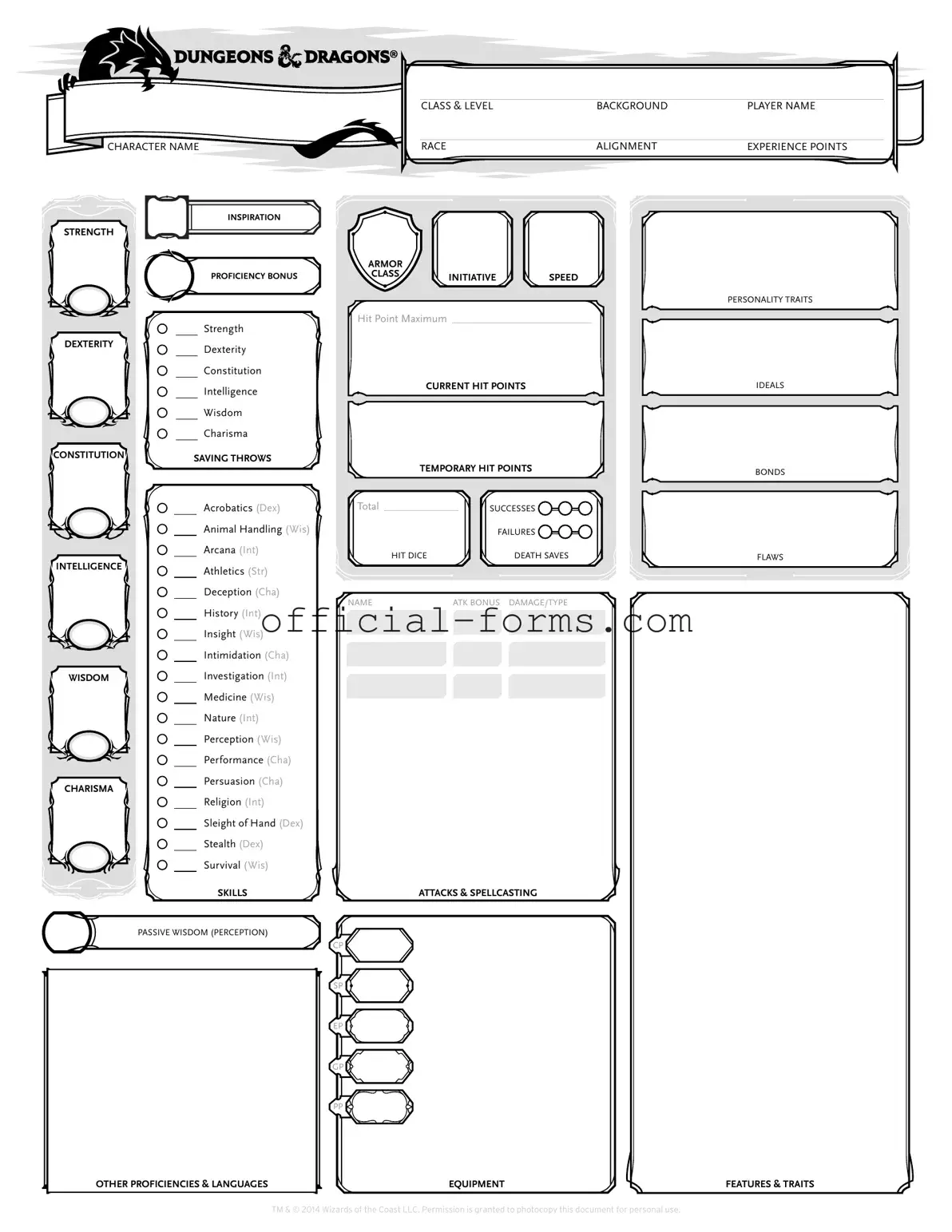When embarking on a journey through the fantastical realms of Dungeons & Dragons, having a well-organized character sheet is essential for both new and seasoned players. This form serves as a comprehensive record of your character’s abilities, skills, and background, allowing for a seamless gaming experience. Key elements include your character's name, race, and class, which provide the foundation for their identity. Additionally, the sheet captures vital statistics such as hit points, armor class, and saving throws, ensuring you have quick access to crucial gameplay information. Players also note their character's skills, spells, and equipment, which contribute to their unique playstyle and strategies during adventures. Beyond these mechanics, the character sheet offers space for personal backstory, motivations, and alignment, enriching the narrative and role-playing aspects of the game. Together, these components create a holistic view of your character, enhancing both gameplay and storytelling within the D&D universe.
